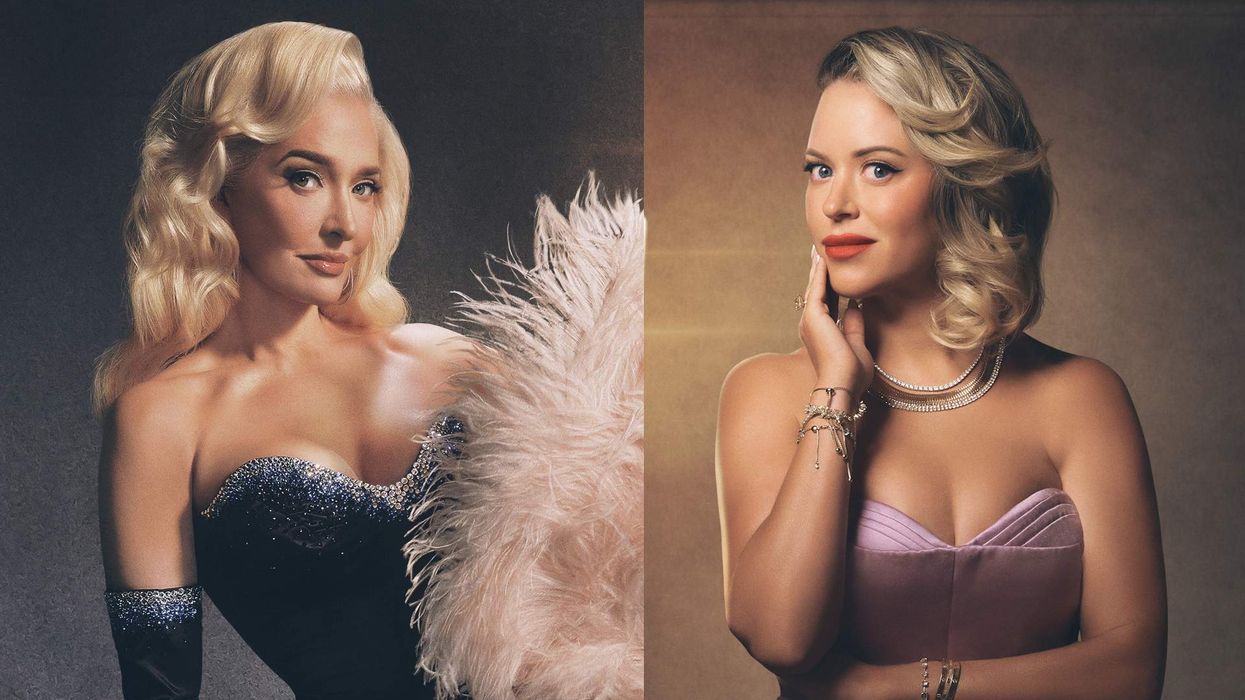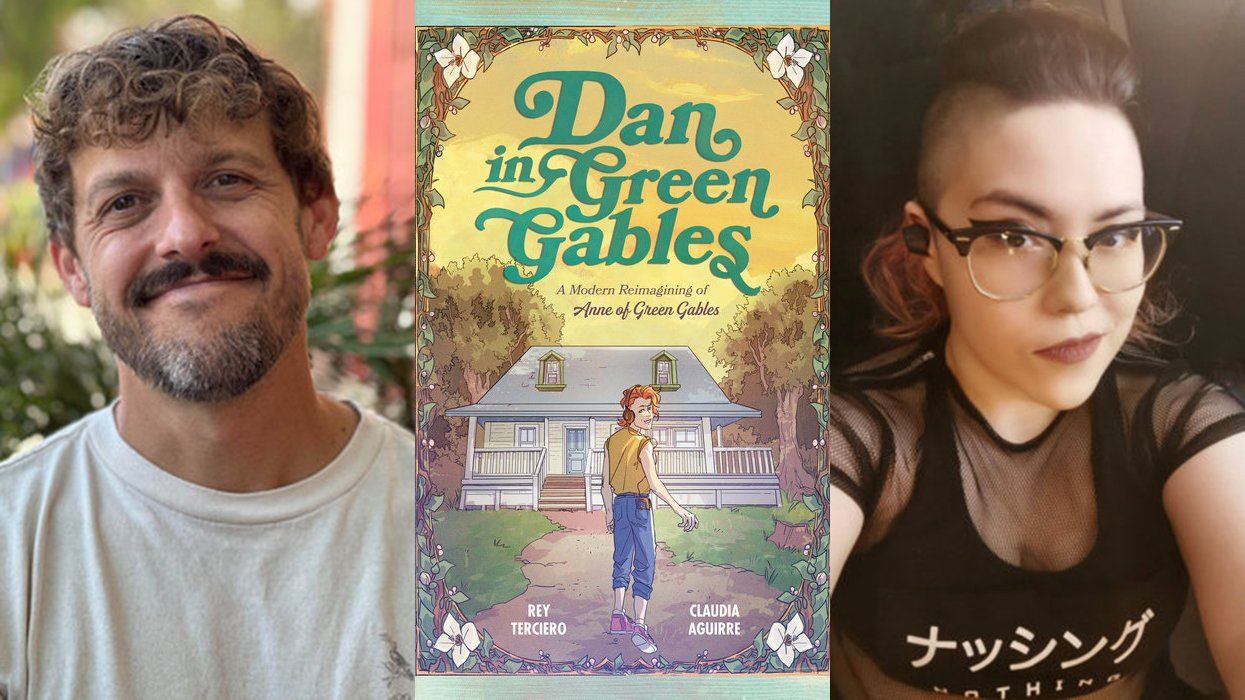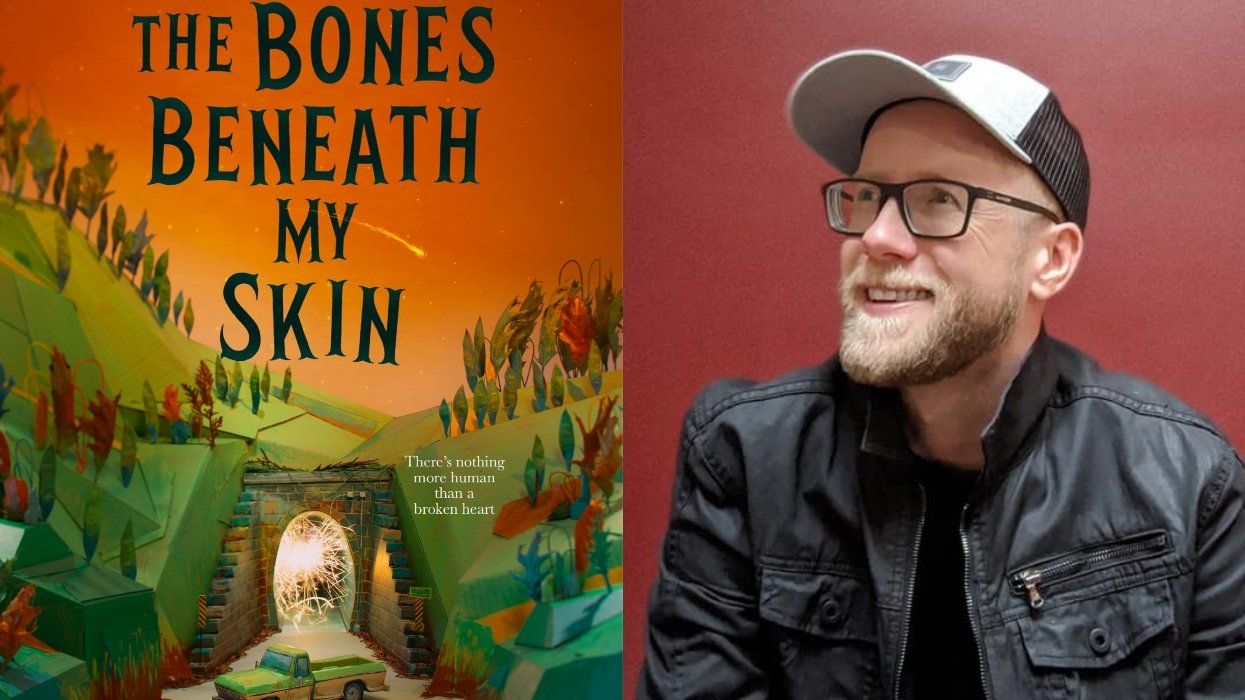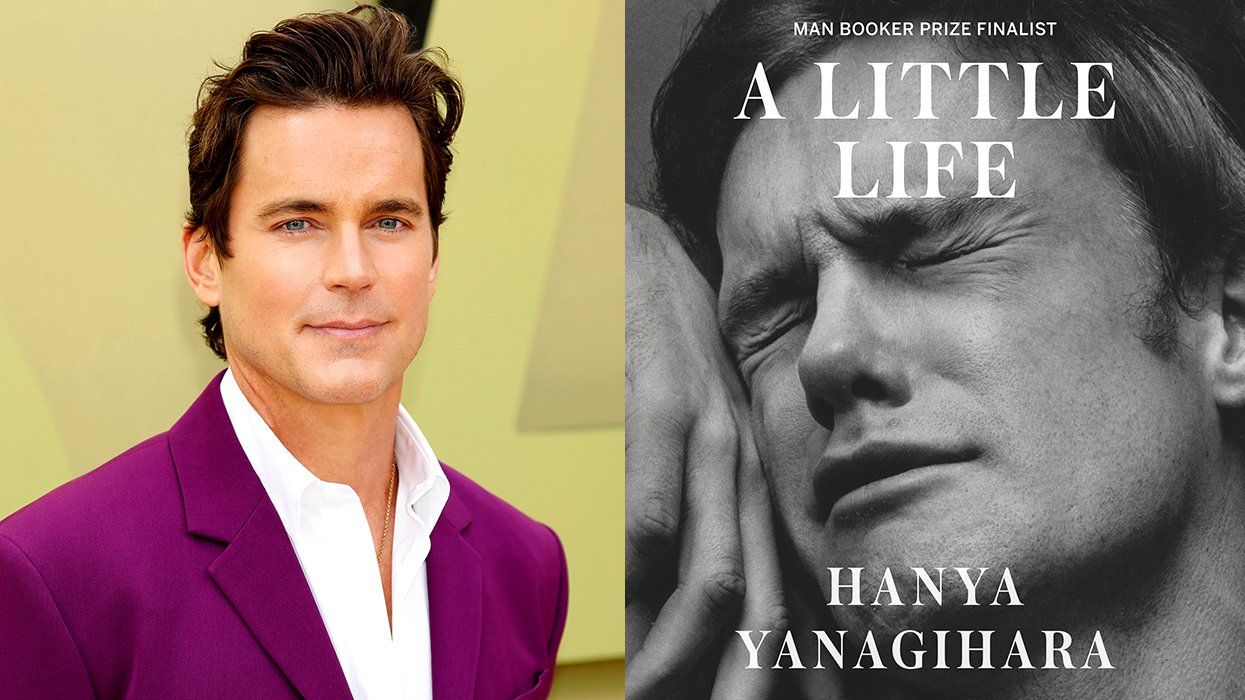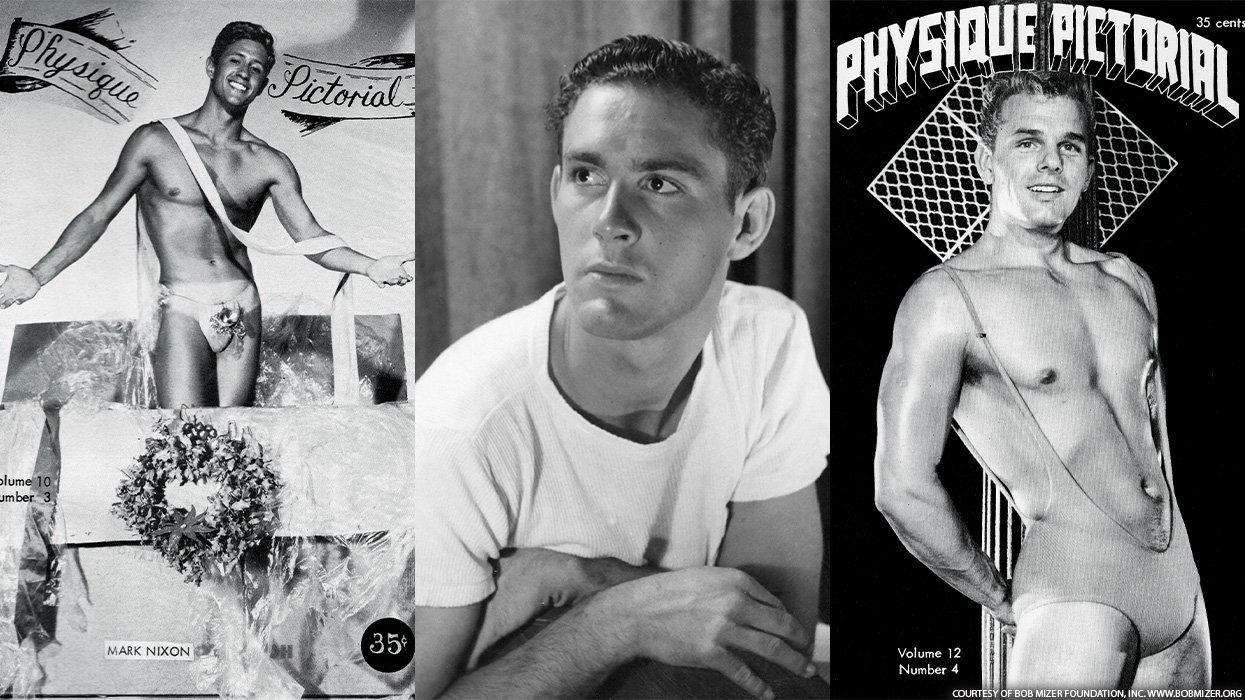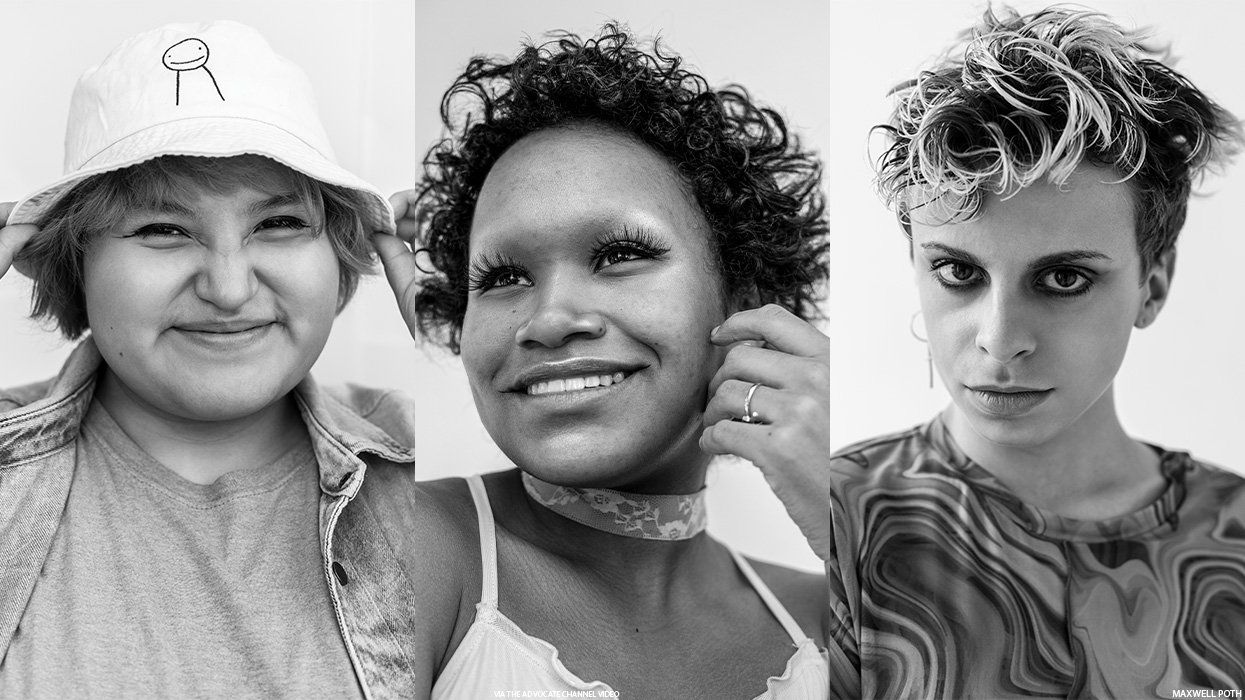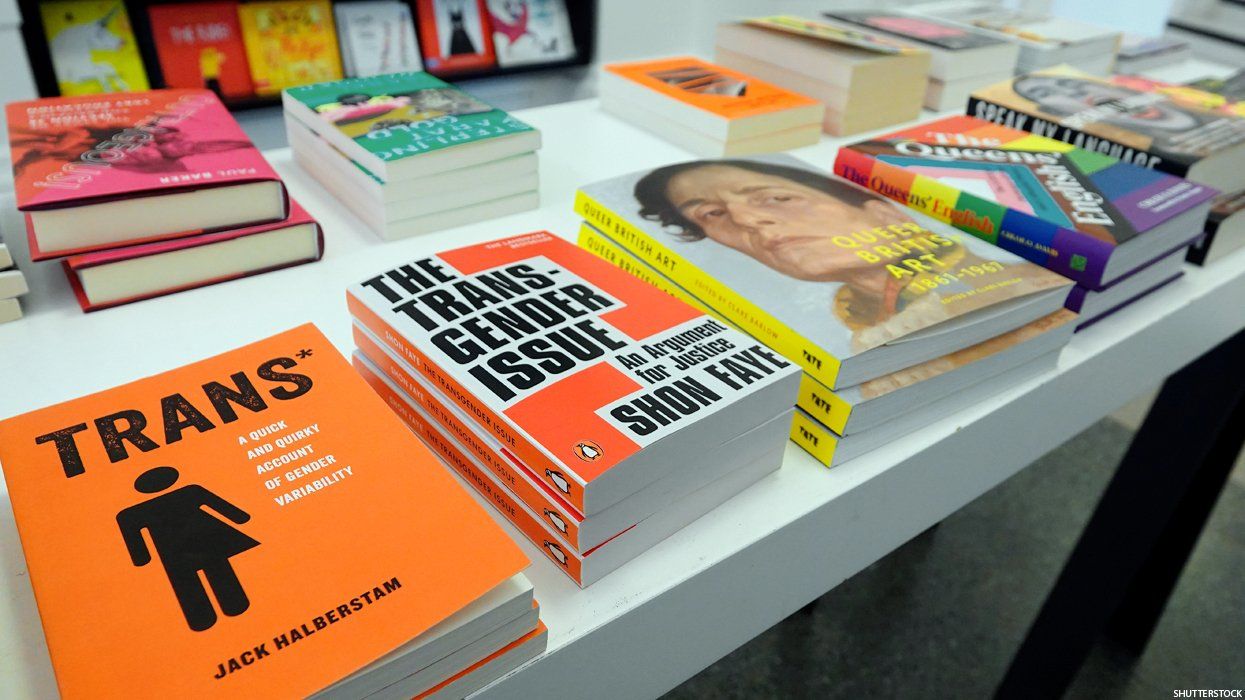Photography by Matthew Placek
It doesn't get better," the poet announced to the Sunday audience gathered around him at MoMA PS1 in Queens, New York. Clad in black pants, a black T-shirt, and a black bomber with shimmering gold zippers, he stood nearly on tiptoes as he began to recite his work before the spellbound museumgoers. It was a crisp November day. We were crowded together for an afternoon of poetry. "It doesn't get any better than this. It doesn't get any more fabulous," he chanted. With that, the poet, artist, and Warhol superstar John Giorno hexed his audience into an awed silence as he worked his way through a long, winding poem, "It Doesn't Get Better," performing the repetitious lines like an incantation, his feet tapping the stage with each word. It doesn't get better, he assured us. When he finished the poem, the full house rose in cheers as fans ran up to the stage to take a picture of him with their phones. Giorno smiled. He was just getting started and had two more poems to go. The last, "There Was a Bad Tree," offered up a parable of an odious, reeking fruit tree ("one bite / and you were dead") that a town struggles to eradicate until a hippie family braves its stench, eats its fruit, and discovers that it confers cosmic knowledge: "The leaves and fruit / increased their clarity / and bliss, and introduced the nature / of primordially pure / wisdom mind." With that, he was done. He took a bow and stepped off the stage to join his longtime partner, the Swiss artist Ugo Rondinone, who hugged him tightly. They both smiled as MoMA curators, including Peter Eleey and PS1's director, Klaus Biesenbach, congratulated Giorno. No one could get enough.
Few can. Least of all Rondinone, who has been the poet's partner since the late 1990s and with whom Giorno has been a frequent collaborator, sounding board, and muse, so much so that the artist's recent exhibition at the Palais de Tokyo in Paris, "I John Giorno," is a multi-form, eight-room tribute to his partner's work over the past half century. The exhibition covers Giorno's career from the early 1960s, when he was a member of Warhol's Factory, to his collaborations and friendship with William S. Burroughs in the 1970s and '80s, when both had their second (of many) lives as punk icons, to his current work as a painter. Comprising videos, portraits by other artists, collaborations, photographs, paintings, installations, and poetry, it is both a pedagogical effort -- one that has introduced many to Giorno's lesser-known material -- and a love letter, perhaps art history's longest and largest.

Giorno and Rondinone became lovers and collaborators in 1997, shortly after Rondinone relocated to New York from Berlin. A longtime admirer of American poetry, particularly the Beats, he gravitated to the Poetry Project at St. Mark's Church, the epicenter of the New York scene since 1966, when the nonprofit was founded by the poet Paul Blackburn. It has remained a steadfast, important community space in the literary and art worlds ever since, attracting -- and educating through its celebrated workshops and frequent readings -- everyone from Allen Ginsberg to Eileen Myles to David Wojnarowicz. (I was once a curator there.) In the fall of 1997, Rondinone attended a reading by Giorno, the first by the poet he'd seen, and invited him -- along with Diane di Prima and Anne Waldman -- to collaborate on a project that never materialized. Rondinone, whose big, sly work often comes in psychedelic colors, pastel gradients, and large installations, often collaborates with writers. He's made frequent use of the kind of pithy phrases that Giorno uses in his own poetry. "Hell, Yes!" one well-known rainbow arc sculpture reads. Another, "Everyone Gets Lighter," is a phrase that became the title of Giorno's 2007 poetry collection. Rondinone prefers simple phrases and gestures in his work, a kind of coy conceptualism that verges on the obscure. Things tip toward meaning, but ultimately remain passive in their resistance to saying anything too specific. He prefers it that way, he says. Let everyone else figure it out.
Poet and artist: the poet born in 1936, the artist in 1964. Giorno lives downtown in the stately old YMCA on the Bowery and has been there since 1966. The painter Wynn Chamberlain introduced him to the building at a house party. Rondinone lives uptown in a large, renovated church he's converted into both his studio and his apartment. They trade off sleepover nights. Giorno is a committed Tibetan Buddhist, Rondinone is not. These differences do not define them. Rather they shape their relationship -- and, for Rondinone at least, have been creatively generative. "I'm interested in dualities," he said one fall evening over coffee in his spacious office.
Loose and impromptu, Rondinone and Giorno work together in an indirect manner, with Rondinone often using Giorno's poems and, in the case of his most recent Paris exhibition, his archive of writings, photographs, and ephemera. Their first major joint venture, Lowland Lullaby, opened at the Swiss Institute in Manhattan in 2002 and featured a groovy black-and-white disco floor, under which hidden speakers piped in Giorno reading "There Was a Bad Tree." The Swiss artist Urs Fischer provided funky sculpture and drawings for the walls. The artist and director of the White Columns art gallery, Matthew Higgs, singled out the show as one of the best of that year in Artforum's annual roundup issue, writing that it "made absolute sense and no sense at all," the exact place where Rondinone frequently hovers in his work: the deckle edge of meaning and no meaning, a thin but definite gray zone he maps with a delicate sense of space and its organization.

Rondinone and I meet on a recent night at his studio. (Giorno was in Paris for a series of readings in conjunction with Rondinone's exhibition at the Palais.) Just north of 125th Street, the 20,000-square-foot building has retained its churchly facade, including gorgeous stained glass. Rondinone purchased the church, built in 1887 by the architect Henry Franklin Kilburn, four years ago, after the congregation that owned it went bankrupt. It had long ago fallen into disrepair, so he gutted it. He spent three years renovating the building into offices, showrooms, several workshops, and his own apartment, where he's now lived for the past year since its completion. Waiting for Rondinone to show up, I peek into the church's former nave, which the artist remade into a testing ground for an upcoming exhibit in Rotterdam. Forty-five life-sized clowns, in various stages of completion, are positioned throughout the room. Some slouch sadly, others appear to weep. Still more hold their heads up, eyes closed as though they're enjoying the sun.
Rondinone greets me in blue overalls, a little dusty from the day's work. With a salt-and-pepper beard and dark, sharp eyes, he has a friendly, though muted, look that achieves a certain gravitas, like someone who's spent the day meditating on the fate of the world and concluded that life will go on. He is soft-spoken, almost hesitant when we move through introductory pleasantries until we get around to his relationship with Giorno, his lover, best friend, and -- as he corrects me when I refer to them as "collaborators" -- his "muse." Then he becomes excited. "We are each other's muse," he says, leafing through a stack of installation images of the Paris show as he explains the organizing principle behind the exhibition: eight rooms, each for a part of Giorno's career, from his two years in the Factory (Giorno is the subject of Warhol's seminal film Sleep) to his poetry recording project Dial-A-Poem to his collaborations with the artists Pierre Huyghe and Rirkrit Tiravanija. Between that: Rondinone wallpapered Giorno's digitized archive in rainbow colors, curated a room of Giorno's typographical paintings, and presented portraits of the artist made by other artists and photographers. Says Rondinine, "I wanted to highlight poetry through the means of contemporary art."
Rondinone is mathematical in his approach. (He shares this with Giorno, who has worked in the past with complicated recording instruments to create complexly arranged and layered poems that consist of carefully timed delays and repetitions.) As we go through the show, image by image, work by work, room by room, Rondinone explains the logic of each decision, much of which came down to a carefully balanced visual geometry. In a room of Giorno's own paintings, Rondinone has included "four layers" of work: the first consisting of eight wall paintings; the second, one set of 25 paintings with white text on a black background, paired with 25 of the same paintings with the text and background reversed; a third: six telephones that each played one of Giorno's Dial-A-Poem; and the final layer: 10 video sculptures consisting of two monitors, each of which displayed a poem, with one monitor reading white on black, the other black on white.
There is a chill to Rondinone's bibliographical approach to his partner's life. Asked if he'd discovered anything new about Giorno in the process of digitizing his archive of 12,000 items, he says, "Not really."
Still, he says, "There were many things I didn't know about, whatever he was involved with in the downtown scene." But that was to be expected. The biggest discovery was Giorno's own unpublished audio poems, which Rondinone presented at the Palais. There is an overall flatness to his practice that sounds an off-note against Giorno's own full-bodied, breathy work, which lends his poetry a performative quality, best heard first, then read. Once you've listened to him, his voice works itself into yours when you read the poems to yourself -- and for the better. But if Giorno relies on charismatic presence, Rondinone's is decidedly removed, almost ghostly: He's a true biographer. Everything about Giorno is of interest to him, and each thing carries a soulful weight. "It is very straightforward," he says: The process of making your partner's entire life into an eight-room exhibition.
Rondinone's black-and-white, multi-channel film portrait of Giorno, Thanx 4 Nothing, opens the show and sets the visual and emotional register of the exhibition. In it, Giorno stands barefoot on a stage and recites his poem installation, "Thanx 4 Nothing," written in 2006 on the occasion of his 70th birthday. The film, which consists of four screens and 16 monitors, alternates Giorno between a white suit and a black suit. "I want to give my thanks to everyone for everything," he begins. He resists lamenting the dead -- "Allen, Brion, Lita, Jack" -- offering up a mourning poem that nevertheless forgoes nostalgia:
I don't miss any of them,
no nostalgia,
it was wonderful we loved each other
but I don't want any of them back,
now, if any of you
are attracted to any of them,
may they come back from the dead,
and do whatever is your pleasure,
may they multiply,
and be the slaves
of whomever wants them[.]
The poem is a tonic thesis for a show that plays with, but never gives itself over to, nostalgia: for the century past, for the artists who composed that century, and for the many heydays of the poet's juggernaut career. I was reminded of the poem "A Blessing in Disguise" by John Ashbery (a friend and peer of Giorno's), which treads similar ground and opens with a line that easily applies to Rondinone's bright and dense exhibition: "Yes, they are alive and can have those colors." This same bright, teeming sense of life floods "I love John Giorno" as well as its subject.
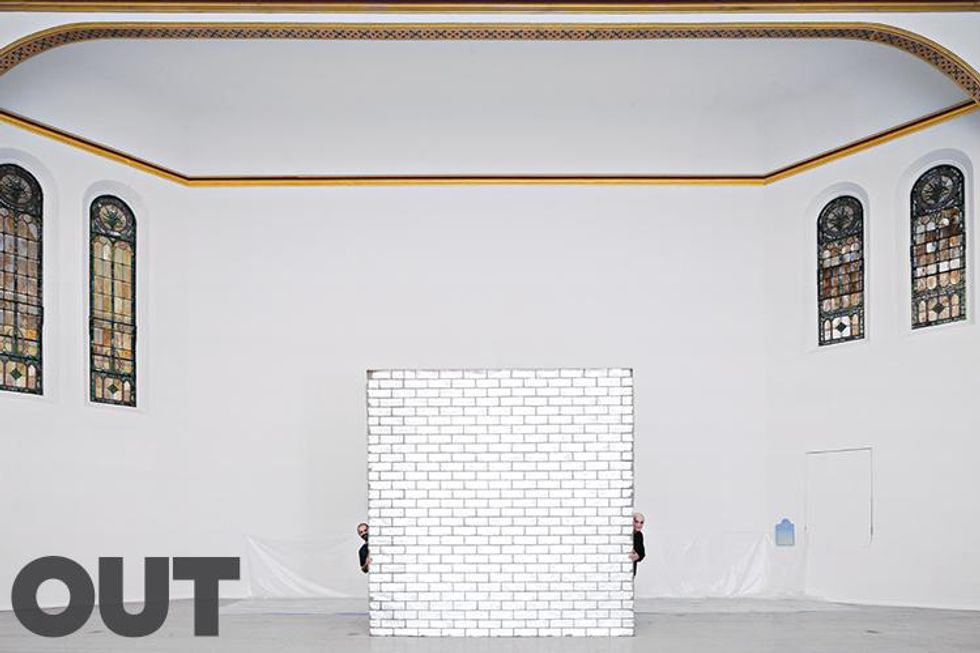
Rondinone and I meet again in New York a few days after the November 2015 Paris terrorist attacks. Giorno had left a few nights before to read at a number of events, including at the Palais de Tokyo and the Pompidou-Metz. Rondinone is somber. Giorno was safe, of course, but we trade stories of friends in the city who reported back on the hushed sense of vulnerability that prevailed on the Seine. Giorno told Rondinone that the subways were empty. No city's subways should be empty. The great rollicking movement of crowds from arrondissement to arrondissement was subdued, if temporarily. I wonder if the events dampened the mood at Giorno's reading, if poetry was up to the moment. It was, Giorno says. This is exactly the point of poetry, we agree. To respond. "The place was packed," Giorno says about his first night in Paris. "Everyone came out to show the world they wouldn't be [cowed] by the fundamentalists." He read his new poem "God Is Man Made," which was met with elated cheers, yells, and screams. "This turned out to be an incredibly powerful moment...at the Palais de Tokyo." It doesn't get better.
On a Saturday, I buzz Giorno's apartment. When I get to his door, he flashes me a grin like we'd known each other for years. He is stout and handsome and looks 20 years younger than his age. "Welcome," he says, and walks me into his studio apartment, which looks out to the New Museum across the Bowery. Tall, robust houseplants keep watch over the windowsills and absorb the ample light that floods the room. It's a warm, sunny day -- a kind of strange, almost summer-like afternoon. Giorno says he'd arrived only the night before from Paris. Rondinone stayed over, stayed later in the morning than usual, and had just left before I arrived. He seems happy to be back in New York, happy to be back with his partner. "I just did five major performances," he says. "But I'm not jet-lagged." But he is tired. He had somehow found himself the voice of resistance and hope in France's dark hour.
In Paris, Giorno, who has always argued a politics through his poetry, made a forceful effort to address the city's distraught state after the attacks. He read his atheistic poem "God Is Man Made" at two of his largest events, once at the Palais and again at a Thurston Moore concert in Metz. Both events were sold out. When he took the stage at Moore's concert and began to read the poem, the audience became frenzied with excitement. "There were shrieks," says Giorno, adding that he was shocked by the response. He hadn't expected such a turnout in that tense climate. A couple hundred miles away, Brussels was in lockdown as the Belgian police searched out the perpetrators of the attack. It was a moment suspended over a vacuum, and no one was quite sure what would happen next. I suggest that poetry is best at these moments when the narrative is not yet filled in. "I know," he says. "I filled it. By chance." Later, audience members flooded the streets, chanting lines from the poem. "God is man made," they said.
In this turbulent year, Giorno's work seems to have taken on a new urgency, not only in light of Paris, but the resurgent xenophobia and racism that have so far defined the 2016 American election cycle.
Despite this, Giorno remains calm -- and defiant. Paris seems to have energized him, and he says he was already working on new material, not only for poetry, but also for a memoir he's been writing for more than 20 years. (It's not writer's block: Life just keeps going.) He won't give too many details on either project.
"I've seen a lot," he says, explaining that much of the book will focus on his friendships with Warhol, Burroughs, Jasper Johns, over a half century's worth of art, poetry, conversation, lovers, and friends. "And I remember it all," he says.
Back in his room, Giorno and I sit opposite one another around a small coffee table, flanked by his bed and his giant fireplace, a reproduction of which Rondinone included at the Palais. Giorno explains that every year he spends several hours ritually meditating before the fireplace in order to call in the New Year. During the ritual, the practitioner visualizes the Buddha among the flames and feeds it rice, yogurt, and other small foods. "Different grains, barley, rice. Whatever. Twenty-three different things," Giorno says.
The ritual gives the year shape, organizes it, but also provides a moment to pause. Not to reflect, Giorno tells me, but rather not to follow the threads of thinking that swim up in the mind when one stops to rest. Meditation clears the mind. I wonder if this allowed Giorno to adopt such an easygoing relationship to those he works with, from Warhol to Rondinone, both of whom found in him a subject of endless material while he himself seems more subdued, relaxed, open. Rondinone has joined him a few times for the ritual, but mostly the event is a solitary one for Giorno. "It's my 29th year doing this. And 29 years ago, my teacher died, which ended the first 25 years of me being a Buddhist, and now another 29 years have passed." He laughs. "So that goes on," he says.
We go downstairs to his studio, where a few of his silkscreens hang or lean against the wall: "Life Is a Killer," one reads. It's a line he uses often in his paintings. "It's the background that matters, really," he explains. The same phrases crop up a lot, always in bold letters. The background paint marks the differences between the works. We descend still further in the building, down to the basement -- "the Bunker," as it's called -- where, for many years, the novelist William S. Burroughs lived. It's windowless and the ceiling hangs low, a fitting den for the novelist before he fled the city for Kansas, where he spent his last days writing and shooting salvaged wood with his gun. One of those works of art (Burroughs had several gallery shows where he exhibited the works) hangs in the bedroom, now the guest room.
"Many famous Tibetan Buddhists have stayed in this room," Giorno says. I want to finger the little holes in the wood. I think about Burroughs standing in the Midwestern sun, his arm extended, with the gun pointed at a distant tree where this canvas is hung up, a kaboom as the weapon discharges and the bullet splinters the wood. A big, open sky above him.
Now Giorno keeps a large Buddhist shrine in the Bunker, though he says the best items went to Paris for the room devoted to Giorno's spiritual practice. "Do you miss them?" I ask. "Not at all," he says with another raspy laugh.
Ugo Rondinone's exhibition, "I John Giorno," continues through Jan. 10, 2016 at the Palais de Tokyo, Paris.






